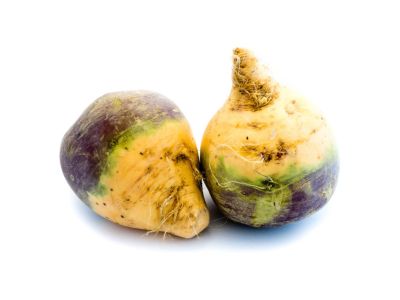When and How to Harvest Rutabagas
Rutabaga plants require 90 to 110 days to mature. They need at least four weeks longer to mature than turnips do. Rutabagas can usually be pulled from the ground quite easily, but care should still be taken not to bruise them in any way to avoid issues with rotting later. Although rutabagas can be harvested once the root crops have reached about 2 to 3 inches (5-7.5 cm.) in diameter, it’s usually better to wait a little longer to harvest rutabagas. Larger roots, about 4 to 5 inches (10-12.5 cm.) in diameter, are milder and more tender. In addition, those that have been exposed to light frosts can actually be sweeter tasting. To extend the harvest season and protect the crops from heavier frosts, a thick layer of straw can be added.
Rutabaga Storage
Unused rutabagas need to be stored immediately following harvesting. Trim off foliage to about an inch (2.5 cm.) of the crown. Wipe the roots clean but avoid getting them wet, as this can lead to mildew and rotting. Cooling is one of the most important factors when preserving rutabagas. For best results, cool them as soon as possible. Cooling reduces root respiration and water loss. It can also lower the risk of storage burn. In some cases, rutabagas can be given a wax bath, dipping them in warm wax to prevent moisture loss. Freshly harvested crops should be cooled as close to 32 degrees F. (0 C.) as possible. In addition, they require high relative humidity. Given suitable conditions, temperatures of 32 to 35 degrees F. (0-2 C.), and relative humidity at or around 90 to 95 percent, rutabaga storage can last anywhere from one to four months. Rutabagas store well in the refrigerator, as this can often provide the most optimal temperature and humidity conditions. They can also be stored in a root cellar, provided the temperature and humidity meets the required needs of rutabagas.
